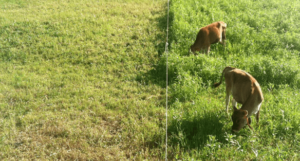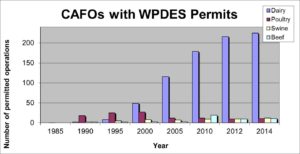None of us would argue that efficiencies in agriculture — reducing costs to raise and harvest crops, and feed animals, for starters — have had a monumental and often very positive impact for consumers. Long story short: people need to be fed and, with a global strain of 6.5 billion, agriculture has come up with solid solutions for feeding the masses.
But producing efficiently is but one piece of the global agricultural puzzle. Another just as important component is conserving efficiently.

According to recent information from the USA chapter of the Union Of Concerned Scientists, the nationwide cost of farm runoff is hefty:
Water pollution from fertilizer runoff contaminates downstream drinking water supplies, requiring costly cleanup measures with an annual price tag of nearly $2 billion.
I would argue that this estimate is too low. A recent article in the Minneapolis Star-Tribune notes that the State of Ohio alone has received millions in aid to treat harmful algae bloom (HAB) activity and other agriculture pollution issues largely affecting Lake Erie.
The Great Lakes Restoration Initiative has spent millions on cleaning up beaches and restoring wetlands that filter pollutants along the lake shore. In all, Ohio has received just over $200 million in federal funding from the program since 2011.
While funding and incentives to improve land management from Federal and State government sources exist — through a variety of sources, like the US Department of Agriculture — to participate requires considerable effort, including an involved application process, on the part of farmers. If the financial incentive to implement better practices does not meet or exceed a crop-and-harvest approach, it is likely that only the most motivated (see environmentally friendly) farmers will apply.
What is needed is a strategy that rewards the farmers most economically challenged, or least concerned, to make permanent improvements to their land management practices. Depending on their location, these are the farms contributing most densely to HABs — farms which, within reason, are not necessarily of a particular size — that must be targeted for any real conservation impact to be realized.



